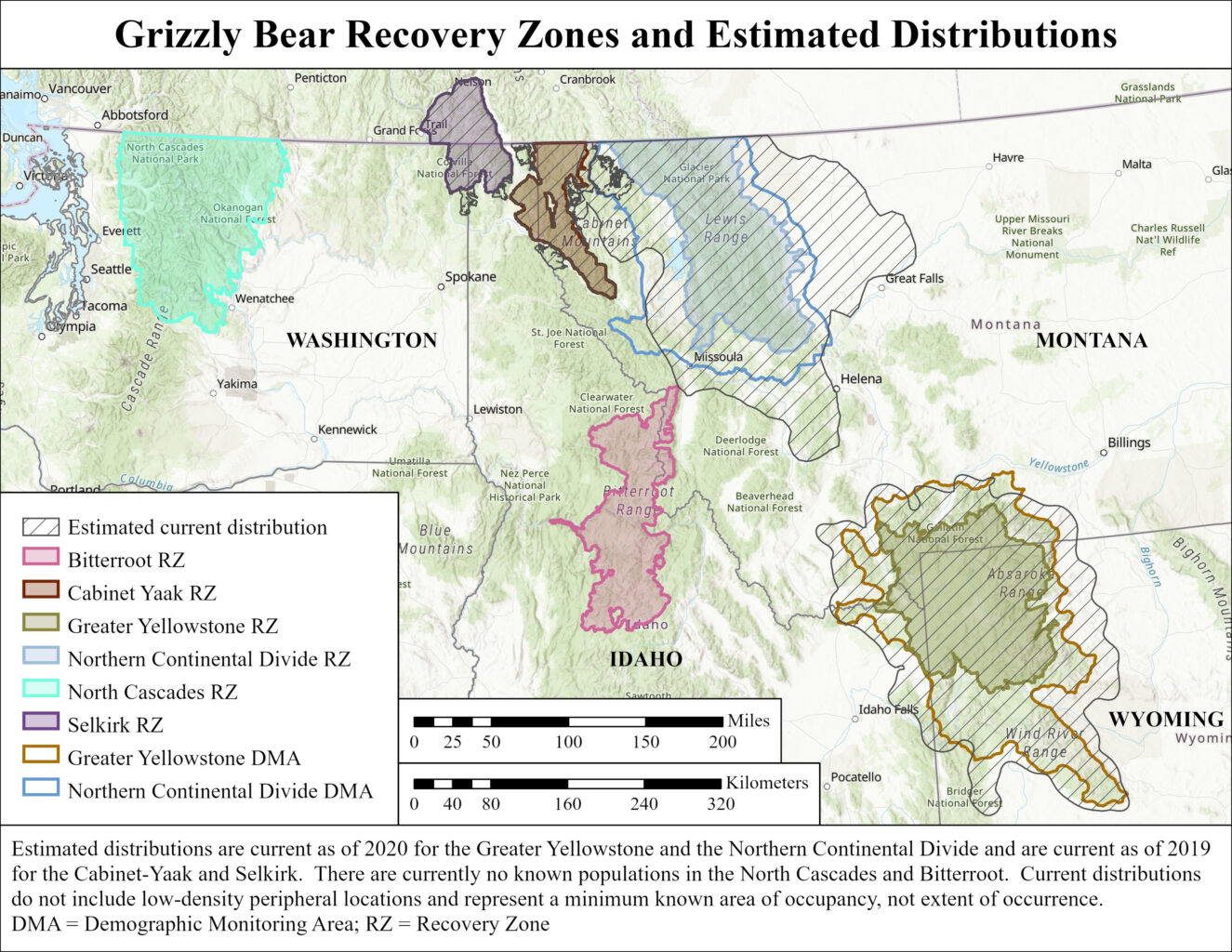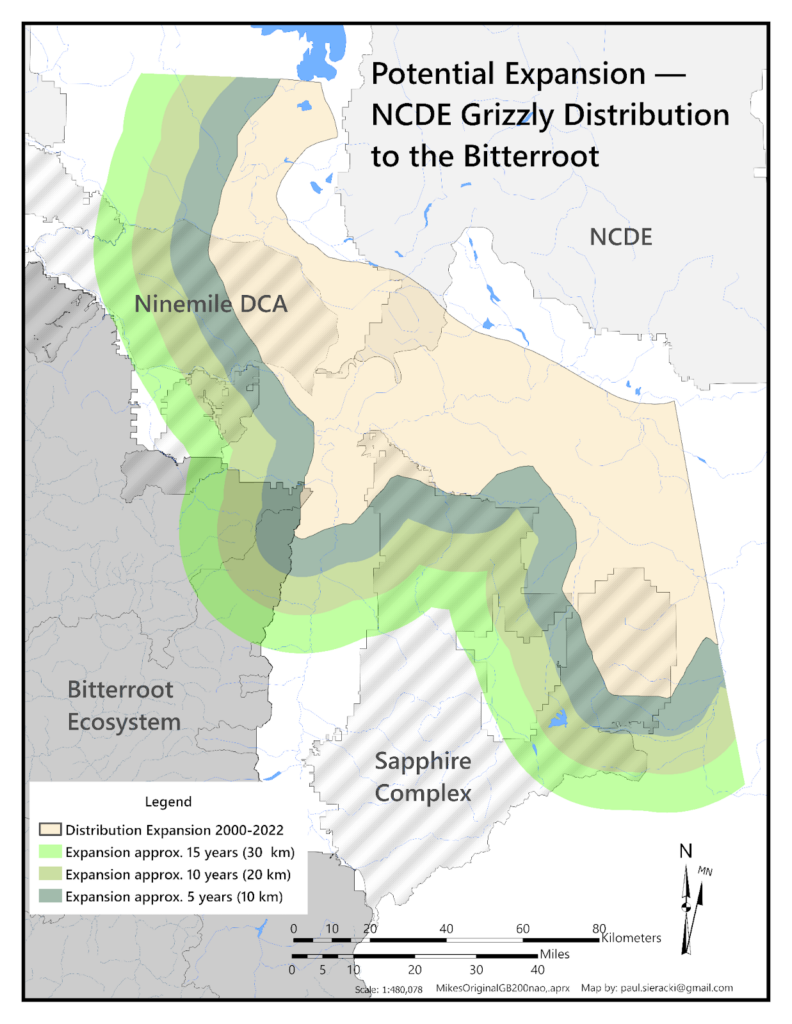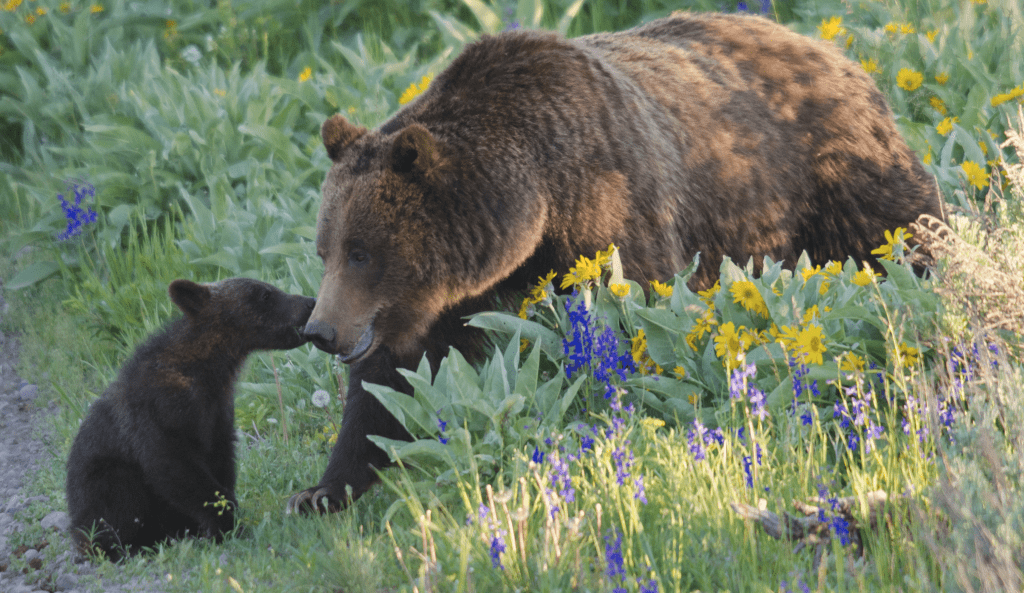On the Idaho-Montana border lies a vast wild landscape. Millions of acres in size, this rugged and roadless country is prime grizzly bear territory. The problem? Instead of being home to a large, thriving population of bears, grizzlies are few and far between. This is the Bitterroot, or what grizzly conservationists call the Bitterroot Ecosystem Recovery Zone.

The Bitterroot Ecosystem (pink zone on the map) is one of the critical recovery zones for grizzlies in the Northern Rockies. Map credit: USFWS
Scientists have long seen the Bitterroot as a key place for grizzly recovery because the area could support large populations of grizzly bears and help connect populations of grizzlies throughout the Northern Rockies. An exciting new report from the Flathead-Lolo-Bitterroot Task Force and WildEarth Guardians shows that female grizzlies could occupy the Bitterroot within five years!

Specifically, the report estimates the contiguous Northern Continental Divide Ecosystem population could move six miles into the Bitterroot within 5 years, and after 15 years move 18-25 miles to occupy more of the area. At that point dispersers ahead of the main population would move deeper into the Bitterroot. Full report can be found below.
But grizzly bears won’t make it to the Bitterroot without our help. Montana and Wyoming have formally petitioned the U.S. Fish & Wildlife Service to remove Endangered Species Act protections for grizzlies in the Northern Continental Divide Ecosystem and Greater Yellowstone.
Even with existing protections, grizzly bears already confront relentless lethal threats – poaching, trapping, train collisions, climate change, road construction, logging, and more. Further, Montana’s proposed grizzly bear management plan and new state laws and regulations make it easier for people to trap or kill wandering bears.
Grizzlies can’t return to the wild Bitterroot if they are shot, caught in a wolf trap, or run over by a freight train on the way there. To ensure grizzly bears can successfully reach the Bitterroot, the report finds it will be essential to keep Endangered Species Act protections in place. The report also recommends:
- Minimizing grizzly killings caused by people;
- Constructing wildlife crossings over highways and rail lines at key locations to allow grizzlies safe passage across them;
- Expanding rules and public education to improve food storage and other attractants, like garbage, to avoid attracting bears to places where they could come into conflict with people; and
- Reducing the number and density of roads that disturb grizzlies in core habitats and connectivity corridors.
Read the full report here.
You can make a difference. Soon, the U.S. Fish and Wildlife will be considering different options for restoring the Bitterroot grizzly bear population, and the public will have an opportunity to weigh in. We will need your voice.
Sign up for our email list to stay up to date with our work protecting bears in the Northern Rockies, and get alerted when there are opportunities to take action for grizzlies and the wild places they call home.

Grizzly bear and cub. Photo by Sam Parks.